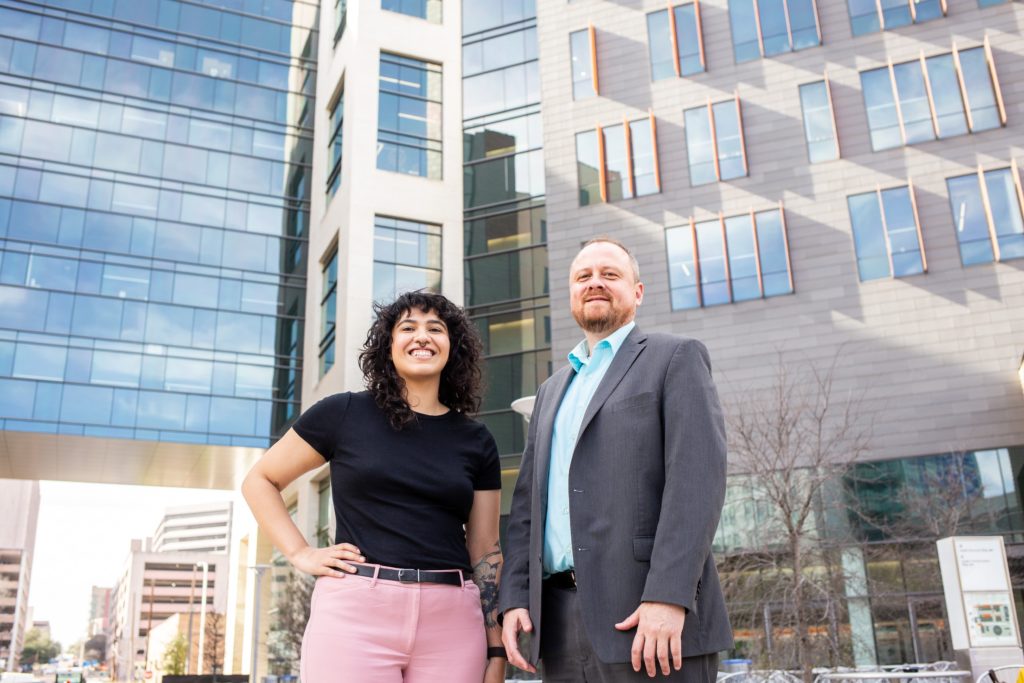On the organization facilitating Austin’s emerging Innovation District

Image from Capital City Innovation Workshop
Impact Hub’s 2019 Austin Impact Accelerator program is well underway. The twelve businesses and organizations in the 2019 cohort meet weekly to discuss, plan, and execute solutions and innovations to Austin’s affordability and workforce development challenges.
One champion of the Accelerator’s Workforce Development track is Capital City Innovation (CCI); the non-profit that is facilitating the emergence of Austin’s Innovation District that will focus on health and life science and its intersection with Austin’s strengths in technology and entrepreneurship.
The concept of an innovation district is fairly new. Following the Great Recession, there was a trend popping up in many cities around the nation. For decades innovation had been home to places like Silicon Valley; regions of larger metro areas that had large corporate campuses and limited accessibility to a broad range of people. So demand and need to expand outside of that region grew. Silicon Valley, and places like it, simply couldn’t be the single answer to innovation in our nation.
The Brookings Institute describes Innovation Districts as ‘geographic areas where leading-edge anchor institutions and companies cluster and connect with startups, business incubators, and accelerators. They are also physically compact, transit-accessible, and technically-wired and offer mixed-use housing, office, and retail.’
But how does that connect to Austin’s emerging Innovation District? I sat down with Victoria O’Dell, communications and program manager at CCI’s office at the new Dell Med building to learn more about their work, and how the Austin Impact Accelerator supports CCI’s mission.
MMA: Tell me a bit about Capital City Innovation and its mission.
VO: The vision for the Innovation District is an inclusive community where Austinites come together to create new models of health and economic growth for all.
We are an initiative of multiple stakeholders – Central Health, Ascension Seton, The University of Texas at Austin, the Downtown Austin Alliance, the Austin Chamber, the City of Austin, and Travis County.
The District will start on the 14-acres of land owned by Central Health where the former Brackenridge Hospital sits. Demolition of the hospital has started and the first building for the Innovation District is expected to be up in about 2.5 years.
Our mission is to support and encourage innovation among academic institutions, health organizations, companies, startups and entrepreneurs, developers, government, and creative individuals by combining creative placemaking and programs that promote partnerships.
MMA: Why did CCI invest in the Austin Impact Accelerator program? Why did you choose to specifically champion Workforce Development ventures?
VO: CCI has 4 pillars we are we are working to advance as the first buildings go up.
- Connecting Innovators
- Building capacity (workforce!)
- Creating place
- And Increasing investment in innovation
Workforce development is an important and foundational piece for the Innovation District to be realized.
We are not here to reinvent the wheel or duplicate efforts. We are excited to be connected with potential partners and organizations that are already doing great work building opportunities for Austinites. We are especially keen to direct them to opportunities to build the life science, health, and tech workforce. While Austin is known for its tech sector, there are growing opportunities in the health and life sciences. We want to help facilitate and nurture these opportunities that will only increase as buildings go up and the district comes online!
We are currently working with the Downtown Austin Alliance on an economic impact study that projects job creation and the economic impacts of the Innovation District and we expect these results to be released in the Fall.
MMA: This was our first year partnering with the City of Austin to deliver six grants to Accelerator participants, and CCI was a part of the grants committee and decision-making process. Can you talk about your experience?
VO: I think it’s great that the City of Austin and its Office of Innovation are working to fund ideas from Austinites that are familiar with and in the trenches of these wicked problems around workforce and housing. It was hard to go through and make final selections with our limited time and the number of thoughtful applications.
The Innovation District imagines a future that facilitates collaboration among diverse entities: corporations and startups, academic innovators, community organizations and nonprofits. We really want to see them all working together to create a space for our whole community. And it’s great to see the City of Austin invest in some of these community-driven solutions.
MMA: What outcomes are you hoping to see from this year’s program? Why do you believe Accelerator programs are uniquely able to produce those desired outcomes?
VO: More collaboration! Bringing all these ideas into one programmatic hub helps to make a more connected Austin. Seeing mature organizations like Integral Care connecting with some smaller community initiatives/organizations like Red Salmon Arts is exciting. The holistic approach Impact Hub Austin is taking to break down silos will help to ensure that we limit the duplication of efforts and lean onto the strength of peer organizations.
This mixing of ideas is so important to make sure we are connecting to the resources and people that have been doing great work in Austin and elsewhere.
MMA: What are you hopeful for in Austin as a whole?
VO: Something I hear often in Austin is that people are interested in what we can do together; how we can collaborate instead of compete.
I’m hopeful we can solve challenges around housing and affordability, but it’s important we share insights and also solutions with each other. I’m hopeful that community leaders will continue to normalize the pathways that connect smaller and larger organizations in public and private partnerships.
I’m hopeful we can solve our city’s challenges with honest collaboration.
